Heat Seekers: A First Look at Thermal Optics
By Paul Rackley, GunBroker Editor
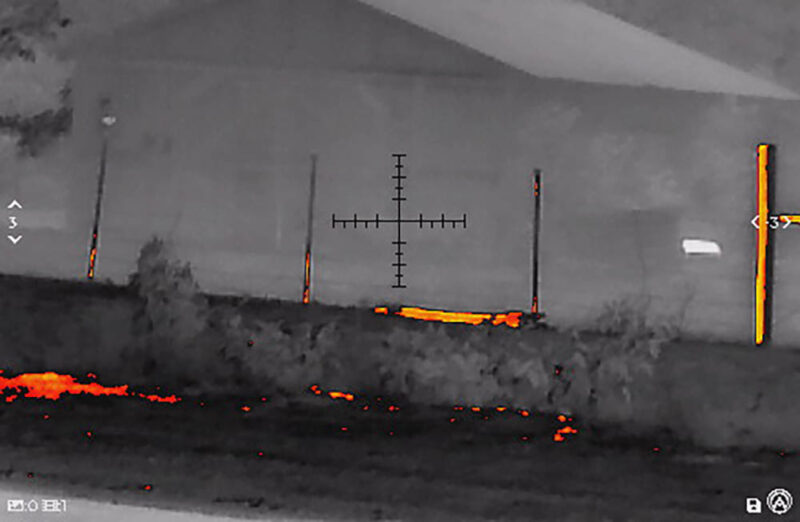
Most of us got our first look at thermal in the 1987 film “Predator.” However, it was “Navy Seals” in 1990 that showed shooters the potential of thermal optics. Or at least, where the technology might eventually reach, despite the fact that what the movie showed was mostly wrong.
Through the 90s, 2000s and pretty much until the last few years, thermal optics were something in which many were interested but few had actually tried. The main reason being expense. Thermal optics have been out of the price range of most shooters. The technology, however, has made huge strides. And while thermal optics might not be cheap, these devices have become much more affordable.
Of course, just because something is cool and affordable doesn’t mean it is needed or wanted. Many might not realize the benefits, or even the point, of thermal technology. Some don’t even understand the differences between thermal and night vision. Or even that there even is a difference.
Thermal or Night Vision
While similar in some ways, thermal optics and night vision are not the same. They even came about differently. Night vision amplifies light, while thermal uses infrared technology to detect heat radiation.
Night vision came about during World War II through German ingenuity. The allied forces weren’t far behind. Early devices worked via a large, near-infrared light mounted on top of a riflescope. The light reflected off of a target into the scope, where an image tube multiplied it. This is called active night vision. It uses infrared illumination to light up targets.
Passive night vision gathers available light, from the moon, stars and other sources, and processes that light into an image on the screen. Its only problem is that if there is no light, there is no image. These devices need at least a little bit of light to produce an image. Of course, some of today’s passive NVDs include an IR illuminator to throw some light into a field of view when needed. Currently, there are three generations of NVDs, as well as digital night vision.
Thermal actually got its start before night vision, more than 100 years earlier, according to Kevin Reese with Sightmark/Pulsar. Sir William Herschel, an astronomer, discovered a light outside of the visual spectrum, now called infrared, in the early 1800s. His son, another astronomer, created the first thermal image in 1840. Sir John Herschel called it a thermograph.
Thermal optics work by gathering infrared radiation, or heat, that comes off objects, including people, at different temperatures. The devices display the varying temperatures as distinctive colors, such as black for cold and white for hot. The process basically focuses infrared radiation through a germanium objective lens that is scanned by detectors to create a map of temperatures. This is called a thermogram. The data is then sent into a processor as an electrical signal. This signal gets converted into an image on a display.
Into the Affordable
Both thermal and night vision came about through necessity. Humans cannot see in the dark. Being able to see in the dark can provide an advantage, if one can afford it.
Technology has made strides with both, all while prices have dropped. About 10 to 12 years ago, thermals optics ran between $10,000 and $25,000 or more. Night vision devices weren’t much cheaper. Today, NVDs run between $200 and $600 for Gen 1, all the way up to $3,000 to $6,000 for Gen 3; digital ranges up to $2,500 or more depending on brand and model.
Thermal optics can now be had for between $2,000 and $4,000, with high-end models costing more. Still, many people don’t understand why someone needs thermal optics. They’ve never really thought about it that hard.
Do Thermal Optics Work?
While history and price matters, most people only care if works. So, the question becomes, are thermal optics beneficial to shooters and hunters? Basically, do they work?
Todd Huey of Huey Outdoors says that thermals absolutely work. He, in fact, has used thermals for years to hunt coyotes and hogs, particularly hogs causing crop depredation. Huey likes thermals because they don’t require light, and they really help find targets.
“Thermal defeats camouflage,” said Huey. “All types of camouflage. Coyotes, hogs, etc., can hide but can’t defeat it.”
Huey does, however, recommend people ask three questions before purchasing a thermal. First, what are you trying to do with it? Next, what is your average shot range? Finally, what is your budget?
Those looking at longer shots need magnification. The problem is that magnification reduces field of view, and vice versa. The most expensive part on a thermal is the lens. A thermal optic is just a camera that sees heat. They are digital. Resolution is lost as magnification is increased, just like cameras with digital zooms. However, technology continues to advance. Digital zooms are better now than they were just two years ago, and they continue to improve.
How Thermals Optics Work
Thermal optics detect varying temperatures of objects, known as heat signatures. Everything has a heat signature, such as people and animals. However, rocks, plants, trees and even buildings also have heat signatures. The hotter a person or object, the higher the heat signature.
Relying on heat instead of light provides benefits in certain situations. Using night vision, people can see objects, such as bushes and leaves on trees. Thermal also shows those bushes and leaves, along with what’s in and behind those bushes and leaves. It can even be used to see through fog and smoke to a certain degree, as it is reading heat, not light. As such, thermal devices can be used in complete darkness, while NVDs can’t, unless it projects IR light.
The Issues
Two issues with thermals are depth perception and judging range, according to Huey. He recommends obtaining a device with a range finder. Shooters must also understand the difference in detection range and identification range.
A device might show a “hot” object at 1,000 yards. This doesn’t mean, though, that the object is identifiable or even recognizable. It really doesn’t mean someone should take the shot. At 500 yards, a coyote and a dog can look the same. It can be equally hard to distinguish a human from animals at longer distances.
Even when objects are identifiable shooters might want to double check the distance before firing. These are cameras, not optics. So, depth perception and range determination can be quite difficult. Some thermal optics include a range finder to overcome this issue.
Also, thermals don’t work as shown in the movies. They can’t be used to see through trees, buildings or walls. In fact, thermal devices even have difficulty picking up heat through glass. Something peeking around a corner or tree can be picked up by thermal optics. However, someone standing inside at a window will likely get overlooked.
Types of Thermal Optics
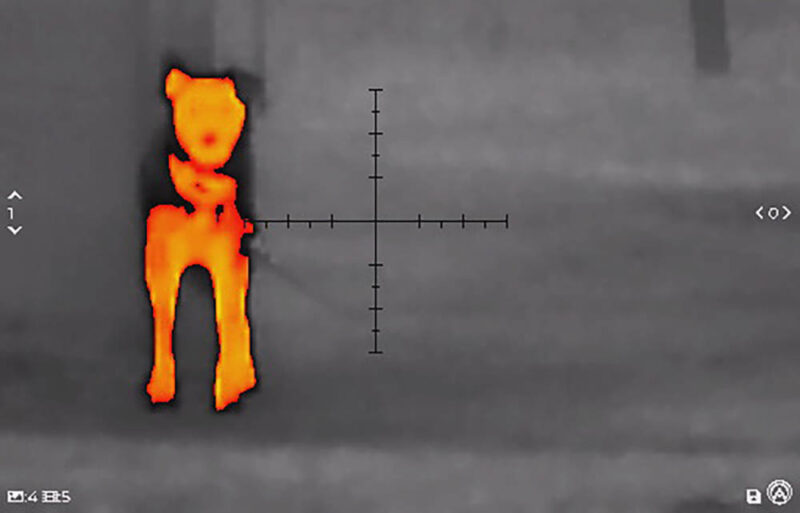
Determining what to buy in thermals is just like purchasing any other higher-priced item. People don’t buy a car without doing some research. So, just like Huey recommends, people need to determine for what a device will be used. In simple terms, how will you be using the device.
If looking for an easy-to-use scouting device, most should probably consider a monocular. This is one of the less expensive options, though, that is completely relative. Monoculars are fairly compact and portable, and they’re not attached to a device that looks frightening to some.
Thermal scopes allow shooters to take aim at what they see, and are really where folks need to make sure they purchase the right one. Magnification reduces field of view and resolution, but allows the ability to take longer shots.
The final option is clip-ons. These devices attach to regular riflescopes, providing a thermal option that can be removed when not needed. While these are easy to sight in, they also add weight, particularly front-end weight.
What I Found
As part of my deep dive into thermal optics, I got hold of two Armasight thermal scopes — a Collector 320 1.5-6×19 Compact and a Contractor 640 3-12×50 — both of which will be reviewed soon.
I quickly learned the cool factor of thermals, whether attached to a rifle or just messing around the house and farm. In fact, I used one to check out an electrical outlet with an issue the week the pair arrived.
To understand the controls, I used the devices to find the horse in the woods, track a dog across the yard and watch cats play outside the barn. It could even be used in bright sunlight, though the image was somewhat washed out.
Early testing to learn the controls revealed a couple on things folks need to keep in mind. One, the controls on thermal optics differ among brands and models. So, keep the manual handy in the beginning. Two, staring at the view finder in the dark wipes out the night vision in that eye for a few minutes. I wasn’t surprised by the first, but never thought about the second.
Now, regardless of the device chosen, thermals provide an option for seeing in a world without illumination. As such, they can be used for hunting, where legal, defense and even around the house.
Plumbers and electricians use thermals to spot problems inside of walls. They can even be used to find weak spots in insulation, or overheating in vehicles. Thermals can be used anyplace where heat is a factor. This includes in the woods.
Related Article: 5 Reasons to Select Thermal Optics


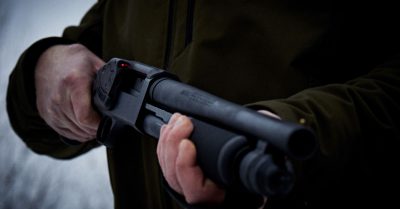
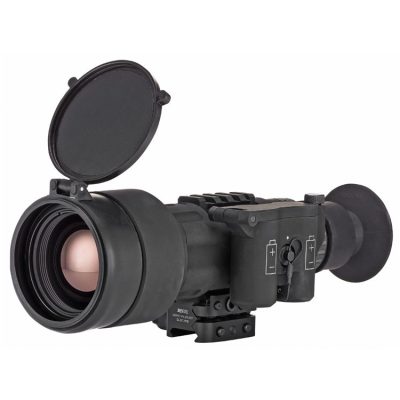
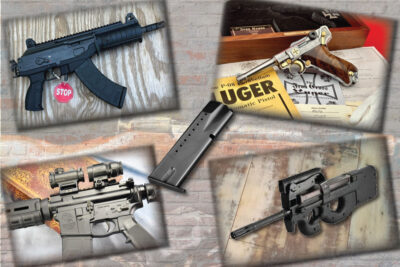
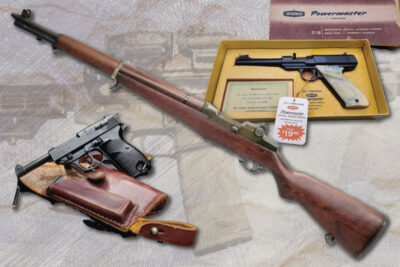

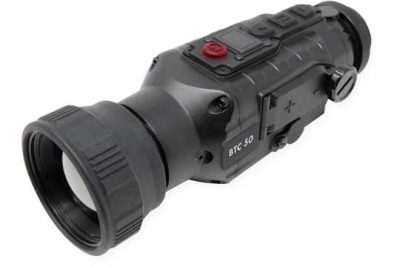
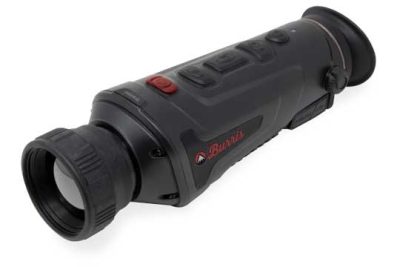
![Surefire SOCOM 5.56 Mini2 Suppressor & Scout Light Pro [Video]](https://qacontent.gunbroker.com/wp-content/uploads/2023/02/NEW-Surefire-SOCOM-5.56-Mini2-Suppressor-Scout-Light-Pro-Video-Cj0GEy7X-1280-400x225.jpg)
![Trijicon 1.5x16S Compact ACOG® Scope – RTR™ [Video]](https://qacontent.gunbroker.com/wp-content/uploads/2023/05/Trijicon_Compact_ACOG-4-1200x800-1-400x267.jpg)
![Leupold BX-4 Range HD Rangefinding Binocular [Video]](https://qacontent.gunbroker.com/wp-content/uploads/2023/04/Leupold-BX4_Range_HD-rangefinder-binocular-400x267.jpg)
